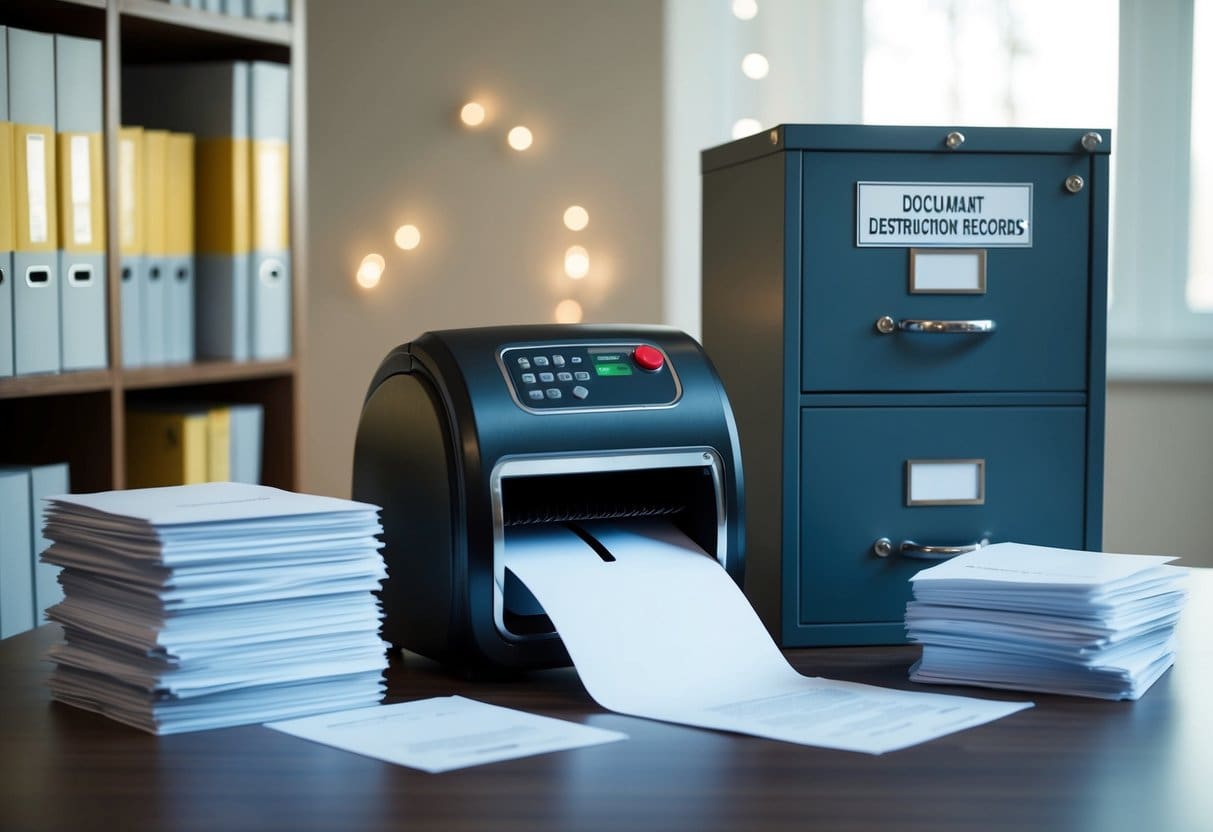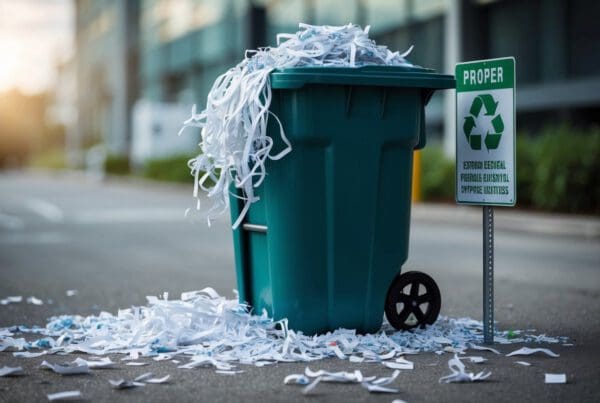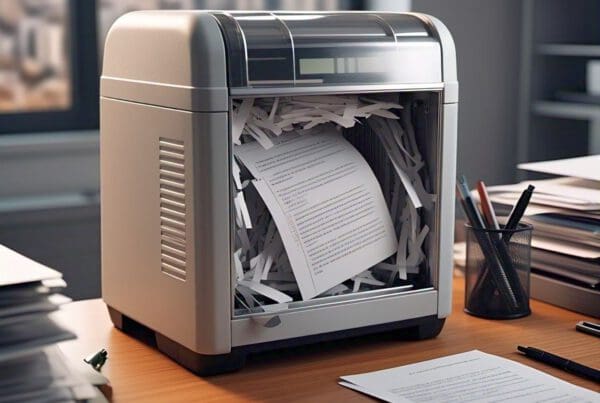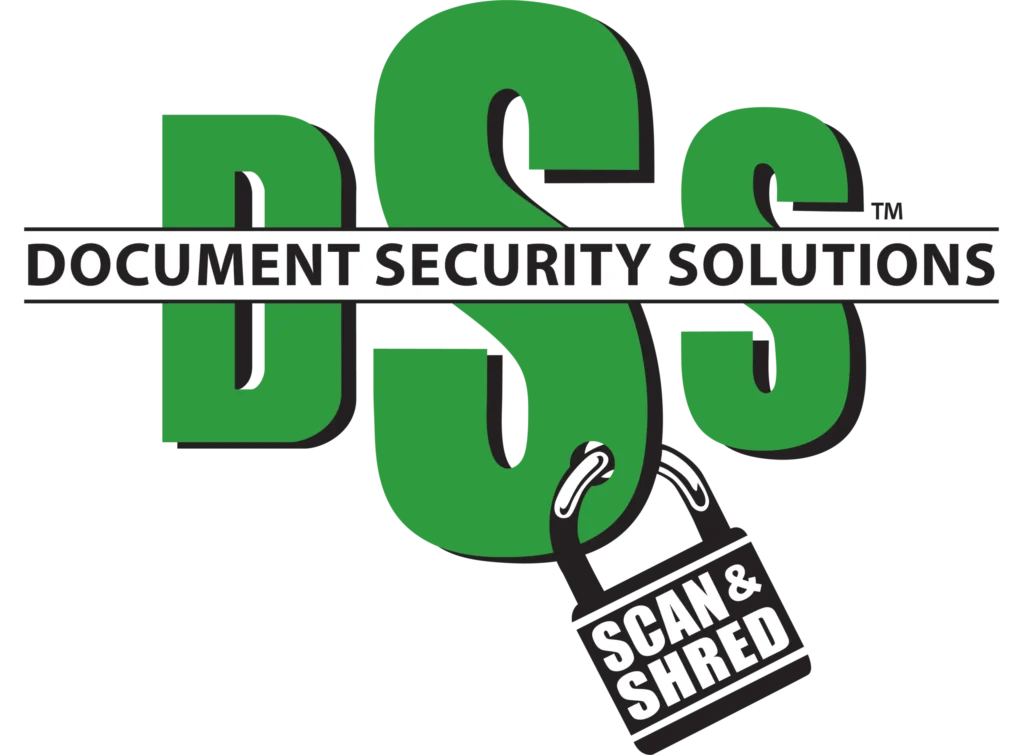Legal and Compliance Framework for Document Destruction

In handling document destruction, multiple laws and regulations guide us on how to manage and dispose of sensitive information securely. Compliance with these guidelines is crucial to avoid legal penalties and protect data.
Federal Document Destruction Laws
Federal laws provide a framework for how we must deal with document destruction. The Health Insurance Portability and Accountability Act (HIPAA) mandates that healthcare entities protect patient records from unauthorized access. In banking, the Gramm-Leach-Bliley Act (GLBA) requires financial institutions to safeguard customer information by creating policies for safe disposal.
The Sarbanes-Oxley Act impacts corporate document retention, stipulating controlled destruction processes for company records to prevent fraud. These laws ensure that we maintain confidentiality and integrity when handling sensitive data.
Industry-Specific Regulation Compliance
Different industries must comply with specific regulations to protect sensitive information.
- In the healthcare sector, HIPAA sets strict standards for how patient records are destroyed. Failure to comply can result in significant fines.
- For financial institutions, the GLBA mandates protective measures for customer data, requiring shredding or other secure destruction methods.
Each industry faces unique challenges and requirements, and understanding these helps us ensure compliance and protect against potential breaches.
Identity Theft and Consumer Protection
Identity theft is a significant concern when handling personal data. To combat this, laws like the Fair and Accurate Credit Transactions Act enforce the proper disposal of consumer report information. We must ensure paper and digital documents containing sensitive data are adequately destroyed to prevent unauthorized access. Consumer protection laws demand that we stay vigilant in safeguarding information.
By following document destruction best practices, we protect individuals’ identities and maintain trust in our systems. These measures are essential in mitigating identity theft risks while fulfilling our legal responsibilities.
Operational Standards for Secure Document Destruction

To ensure secure document destruction, businesses need to meet specific operational standards. These include certifications and standard processes that protect confidentiality and prevent data breaches.
Certification and Industry Standards
Certifications play a vital role in compliance with document destruction laws. We adhere to industry standards such as the NAID AAA Certification. This certification confirms that our document shredding processes are effective and secure.
Our commitment to data privacy means we follow strict guidelines to prevent data breaches. We are regularly audited to ensure we meet federal laws and compliance requirements. Receiving a certificate of destruction guarantees that sensitive documents are destroyed responsibly and securely.
Shredding and Destruction Processes
The actual document shredding and destruction process is crucial for secure disposal. We use advanced shredding machines that cut materials into tiny pieces, leaving no chance of reassembly. This thorough process is vital for data security and confidentiality.
Our document shredding services handle a variety of sensitive documents, ensuring secure destruction every time. We carefully monitor and document each destruction, with audits confirming the integrity of our methods. Data destruction isn’t just a process; it’s a promise of safety and compliance.
Assessing Risks and Maintaining Document Destruction Records
When dealing with document destruction, it’s vital to manage risks and maintain accurate records. Compliance and data security are at the forefront. Efficient recordkeeping and risk management can help prevent data breaches and ensure proper handling of sensitive information.
Recordkeeping and Retention Policies
Our approach to maintaining document destruction records focuses on compliance with legal and industry standards. This often involves specifying document retention periods. By clearly defining these periods, we ensure that documents are retained or destroyed according to regulations. We keep detailed logs of all shredding activities. These logs include dates, the types of documents, and personnel involved.
Certificates of destruction provide additional documentation to verify secure practices. This documentation proves that secure destruction has occurred, which is vital for audits and demonstrating our commitment to privacy and data protection. In certain industries like healthcare, the requirements can be more stringent. Government agencies also have specific policies. Keeping up-to-date with these regulations is crucial for maintaining compliance and avoiding penalties.
Risk Management in Data Destruction
Risk management plays a significant role in secure document destruction. We assess potential risks associated with handling and destroying sensitive information. Identifying weaknesses in our processes helps us develop strategies to improve data security.
Professional shredding services can enhance security by providing secure shredding options. By using such services, we minimize the risk of data leaks. We regularly audit our destruction processes to identify any vulnerabilities and ensure that stringent compliance requirements are met.
Utilizing a variety of methods ensures that risk management remains a top priority. Our continuous focus ensures the secure destruction of documents, reducing the likelihood of unauthorized access and data breaches.





